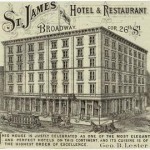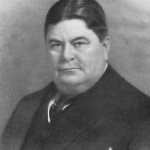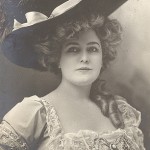In the 1999 film adaptation of An Ideal Husband that recently came out on video, there’s a scene in which Lord Goring, the play’s hero, attends the opening of Oscar Wilde’s The Importance of Being Earnest. All London seems to have turned out for the occasion, which ends with Wilde himself appearing in response to cries of “Author, author!” while Goring, played by Rupert Everett, looks on approvingly. The scene (invented by Oliver Parker, who wrote and directed) is metaphysically daunting: a Wilde character at the premiere of another of Wilde’s plays. Chronologically, it has an historical elegance. An Ideal Husband and The Importance of Being Earnest were both running in the West End at the time of Wilde’s arrest in 1895 for the crime of homosexuality.
Parker’s film isn’t, as far as I know, based on Sir Peter Hall’s 1992 London production of the play, but I doubt if it would have been made if Hall hadn’t revived interest in the play. New York audiences who saw Hall’s production on Broadway four years later, with Nicky Henson in the role of Lord Goring, will find it hard to understand how revelatory it was. As Goring in the original production, Martin Shaw had been got up to look exactly like Wilde. He’d comported himself like Wilde, too, intoning his lines with the sonorous languor we’ve learned to associate with Wilde’s own speech mannerisms. In New York, Henson just wore a fat-suit and a poppy or a lily (I forget which) and trotted out the stock figure of the stage-dandy. Parker’s film goes a long way toward restoring the central mechanism of Hall’s production by casting Everett in the role of Goring.
What had been brilliant about Hall’s conception was its recognition of the coded message in the play. Hall was mining a literary observation: two characteristics that Wilde’s most likable heroes share with their creator are a flair for aphoristic reversals and a fondness for pretending to be something they are not. Lord Darlington, in Lady Windermere’s Fan, pretends to be “wicked” and is really the best of fellows. Lord Goring, in An Ideal Husband, pretends to be trivial and ineffectual and is really serious and resourceful. When Hall showed us Goring recast in Wilde’s own image, the double meaning of the title became clear: an “ideal” husband, whatever else he might be, was arguably a bisexual one.
Both plays actually contained covert references to homosexuality. An Ideal Husband was just a little bit more opaque than Earnest. The subtext of Wilde’s effervescent comedy about a sober, respectable young man inventing a secret identity for himself so as to be able to disappear periodically to do who-knows-what, seems so patently obvious to us now, it’s hard to credit even Victorian audiences with missing it. (What can they have thought all that stuff about “Earnest in town and Jack in the country” and going “Bunburying” was all about?) Of course it was essential that the majority of Wilde’s contemporaries not get the joke. What Hall’s production of An Ideal Husband brought out, which had hitherto gone unnoticed, was that Wilde’s dramaturgy operated on two levels, relying on a potent literary device that amounted to a sort of moral “drag.”
Actually, it was more properly meta-drag. We now use the term “drag” mostly to mean people cross-dressing for non-artistic reasons—because they like to, because it’s funny or fun. But of course theatrical cross-dressing is as old as theater itself, because before the invention of the actress in the restoration period, characters of both sexes were played by males. (One theory is that “drag” referred to the long skirts that boys had to wear to indicate the gender of the characters they were playing.) What I’m calling meta-drag emerges with plays in which characters themselves were cross-dressing and the fundamental meaning of a play was dependent on the audience’s awareness that they were watching a male playing a female playing a male. A boy playing Ophelia in Shakespeare’s day was drag; a boy playing Rosalind or Viola disguised as a boy was meta-drag.
Wilde’s plays presented saints who purported to be sinners—or rather good men who liked to pretend to pretend to be bad. For Wilde’s protagonists, the affectation of affectation was a moral imperative given the institutionalized hypocrisy of society. On another level, they really were “sinners”—in society’s view—if you were hip enough to get the subtext.
Wilde didn’t invent meta-drag, but he seems to have invented the idea of applying it to non-gender-based antitheses—wicked or pretending-to-be-wicked, frivolous or affecting-a-pose-of-frivolity, affected or just saying that you were. (Years later, Joe Orton would invent a brand of comedy based on the premise that homosexuality doesn’t exist, but whose whole force and authority really relied on an audience’s knowledge that it does.) Exactly what makes meta-drag so potent and dangerous—and it almost can’t help being subversive—is a mystery. But no self-respecting culture can afford to be without it, particularly one (like ours) that’s stuck in the idea that theater is supposed to be realistic.
Our drama thinks that the only way for theater to arrive at truth is by saying things directly, a notion that Wilde’s protagonists tended to dismiss and his plays to refute. A culture without meta-drag or its equivalent is one whose theater (like ours) is going to be short on irony, ambiguity, metaphor, artifice, and moral complexity—all the things that great drama tends to revel in.
I remember some years ago having a worried conversation with a friend about what would happen to meta-drag now that there was no longer any real need for it. (My friend is fond of Ronald Firbank, another master of covert homosexual literature.) We actually discussed, though probably not seriously, which was more important: the ability to lead an openly gay life or a form of literature that gave rise to works of such complex reverberating genius.
In fact, what’s happened is that new forms of meta-drag have begun to emerge in the last few decades, very much on the Wildean model but using other binary oppositions—questions of humanity, race, identity, species, even ontology and metaphysics. You see it all over the place, any time an actor purports to play something an audience knows he is not. You saw it years ago in the sitcom episode in which the straitlaced neighbor played by the openly gay actress hit on a man who turned out to be gay. You saw it in Nicholas Hytner’s production of Carousel, in which Audra McDonald played Carrie Pipperidge, and she and Mr. Snow marched around lily-white New England attended by offspring of all different colors and races. You saw it in American Beauty, when the character played by Kevin Spacey repulsed an unlooked-for advance from the gay-bashing colonel played by Chris Cooper.
More recently, you saw it in Being John Malkovich in the scenes in which Malkovich was supposed to be playing someone else inhabiting his own body. There may even have been an element of meta-drag in the episode of The Sopranos in which Michael Imperioli came close to writing his own character out of the series.
Meta-drag, which is “non-vertical”—it creates links of a moral and thematic nature after the fashion of hypertext—makes us momentarily question what does or doesn’t matter or what might or might not be true. For a split second, some piece of knowledge that you knew you possessed but had forgotten because artistry—good acting or the compelling nature of the story—had made you oblivious to it (someone’s gender, the rumors about them, their racial background) flits through your mind. The thought it prompts is gone in a moment, but it leaves an afterimage.
Meta-drag thinks it’s important to remember that nothing is as simple as black-or-white, real-or-fictional, alien-or-human, crazy-or-sane. And, yes—as with the earlier meta-drag, the fundamental opposition lurking behind all these others is probably the primal old right-and-wrong opposition. But that would be boring to dwell on. That would be banal. So meta-drag dresses it up in all these other outfits, the more elaborate the better. That’s what those often dizzying degrees of reality are about: they’re fun and impressive. Also, there’s a moral truth they tend to reenact over and over, which is that when you expose one hypocrisy there’s always another ready to spring up and take its place.
New York Press, July 4, 2000
 Four years later, he began working for the New York Central Railroad. He studied bookkeeping and penmanship (he wrote a magnificently ornate hand and usually signed his name in full, deeming James Buchanan Brady a name worthy of a few flourishes).
Four years later, he began working for the New York Central Railroad. He studied bookkeeping and penmanship (he wrote a magnificently ornate hand and usually signed his name in full, deeming James Buchanan Brady a name worthy of a few flourishes).
 Yet Brady’s relationship with the most lusted-after woman in the United States—the blonde, blue-eyed, spectacularly voluptuous Lillian Russell—was entirely Platonic. America’s sex symbol during the 1880s and ’90s, Russell had made her mark as an actress and singer, but she was also a skillful card player and and an unerringly accurate tobacco spitter. Her extraordinarily warm, intimate friendship with Brady lasted for over thirty years. He was her frequent escort; they traveled and vacationed together; they confided in one another. She came to love him dearly. Sex, however, never entered into it.
Yet Brady’s relationship with the most lusted-after woman in the United States—the blonde, blue-eyed, spectacularly voluptuous Lillian Russell—was entirely Platonic. America’s sex symbol during the 1880s and ’90s, Russell had made her mark as an actress and singer, but she was also a skillful card player and and an unerringly accurate tobacco spitter. Her extraordinarily warm, intimate friendship with Brady lasted for over thirty years. He was her frequent escort; they traveled and vacationed together; they confided in one another. She came to love him dearly. Sex, however, never entered into it.